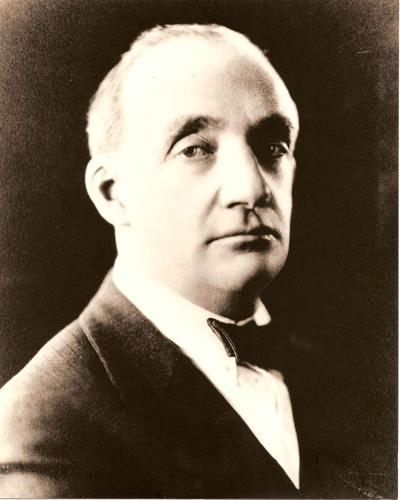
By Carlos N. Olvera
Dana Point Times Apr 3, 2016 Updated Jan 22, 2024
Our local area was a destination for the cow hide trade in the 1800s. Today, it is a destination for people—residents and visitors. In the early 1920s attempts were first made to make Dana Point a place to live or for weekend getaways, but not until 1927 did a full-size plan take place. It was a follow-up to the successful Los Angeles development of Hollywoodland, a 500-acre project. The developer and architect of the plan was Sydney Woodruff—but was he an architect?

Sidney Hawks Woodruff (he mainly went by S.H.) was born February 27, 1876, in St. Clair, Michigan, the oldest of three children. Around 1895, the family lost their fortune and went into heavy debt. By 1900, the family moved to Buffalo, New York, where his father owned a shipping vessel and where S.H. was a 24-year-old self-declared architect and builder. It was his mother’s, Clara Hawks, hometown. His first building was erected in York, Maine. By 1903, he designed the headquarters for Buffalo Milk Co., a Medina sandstone and Roman brick structure in the neo-classical style, among others. He would travel to Illinois and Pennsylvania looking for other projects to develop.
After the 1906 San Francisco earthquake, S.H. went there to help rebuild the city. In August 1906, Woodruff, as a “foremost architect of New York City,” was quoted as saying San Francisco will be rebuilt in five years. One of his buildings was the California Fruit Canners’ building at California and Drumm streets. It was completed in 1916. Today it remains as the former historic Southern Pacific Company.
After San Francisco, things changed. In 1912, Woodruff brought a slander lawsuit against a former business partner for claiming he wrecked their United States home building company. This was in response to a lawsuit brought by Barron Estate Co. against him for fraud and deceit to secure contracts. The California Supreme Court documents stated Woodruff misrepresented himself as “an architect and designer of great skill and experiences and constructed many buildings in eastern cities.” He also moved on to Arizona for more projects where he wanted to tap the Gila River underflow to bring water to the surface for irrigation.
While living in Los Angeles in 1918, Woodruff was employed by Testing Laboratories manufacturing torpedoes. By 1919, he had moved to Santa Monica and was working with the Tracy E. Shoults Company. After Shoults’ sudden death, Woodruff took over the joint real estate company. By 1921, his successes were demonstrated by the development and sale of New Windsor Square. Here we know of his success with Hollywoodland and then on to Dana Point. He tried to get the Ritz-Carlton to build their new hotel in Dana Point on the headlands, but they chose Hollywood instead. Woodruff was a sponsor for the project as was E. L. Doheny, which was announced in November 1930.
By 1930, the Woodruff family home was located at 630 South Rossmore in the Wilshire District of Los Angeles. Built in 1924, Woodruff declared its value at $14,000. Today its value is closer to $2.5 million. When he married Olive Bronson in 1925, they lived next door at 638 Rossmore, which he valued at $65,000. Today’s value is $2 million.
Lots in Dana Point went for a drastic sale at $125 each in 1938. The Dana Point project went into bankruptcy in 1939, but not after trying many different cash flow ideas until the economy came back. They included growing flowers to create a perfume industry, drilling for oil and gas, and a boat rental business for fishing or pleasure, all to no avail. Reorganized as S. H. Woodruff and Associates, he bid on a housing project outside of Las Vegas in 1949 for the Air Force base but was not successful.
Woodruff died in 1961 in Los Angeles at 85. His wife Olive died in Laguna Beach in 1964 and is buried in Redlands near her daughter from a previous marriage and her first family. Olive and S.H. had no children together. His sister Mildred, a Los Angeles socialite, never married and died in 1960. Woodruff’s real success was in real estate and business development. He was dedicated to the Dana Point project. The new Lantern District is his epitaph, as is Hollywoodland, as none else can be found.
Carlos N. Olvera is chair of the OC Historical Commission and a Dana Point city councilman.

